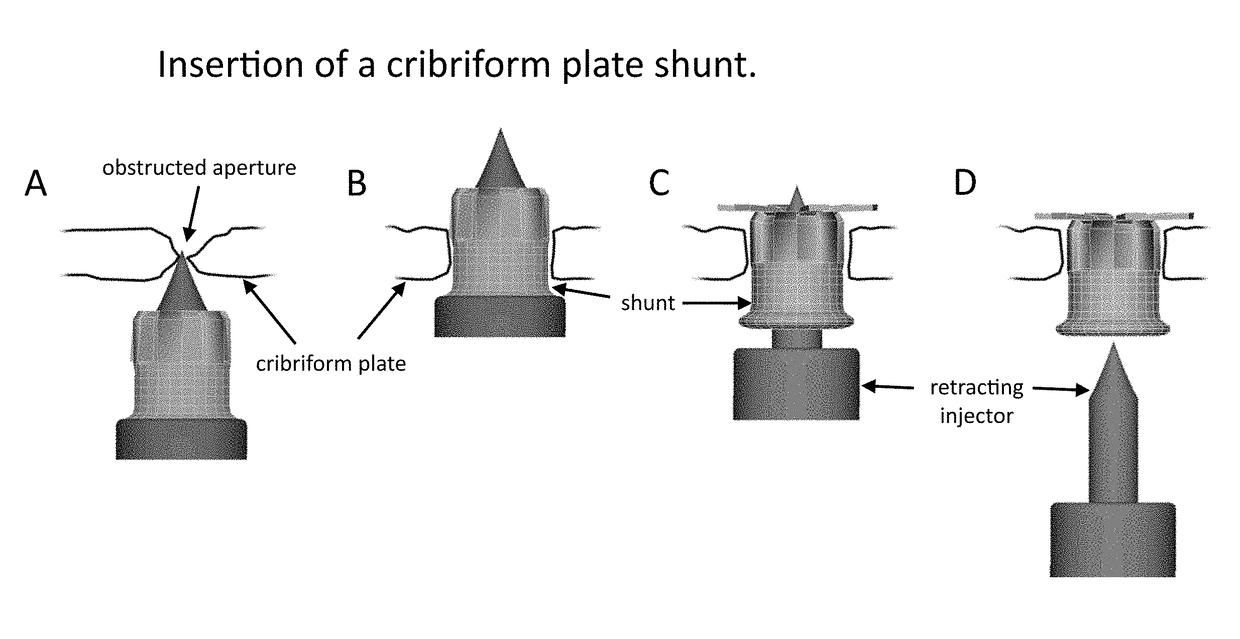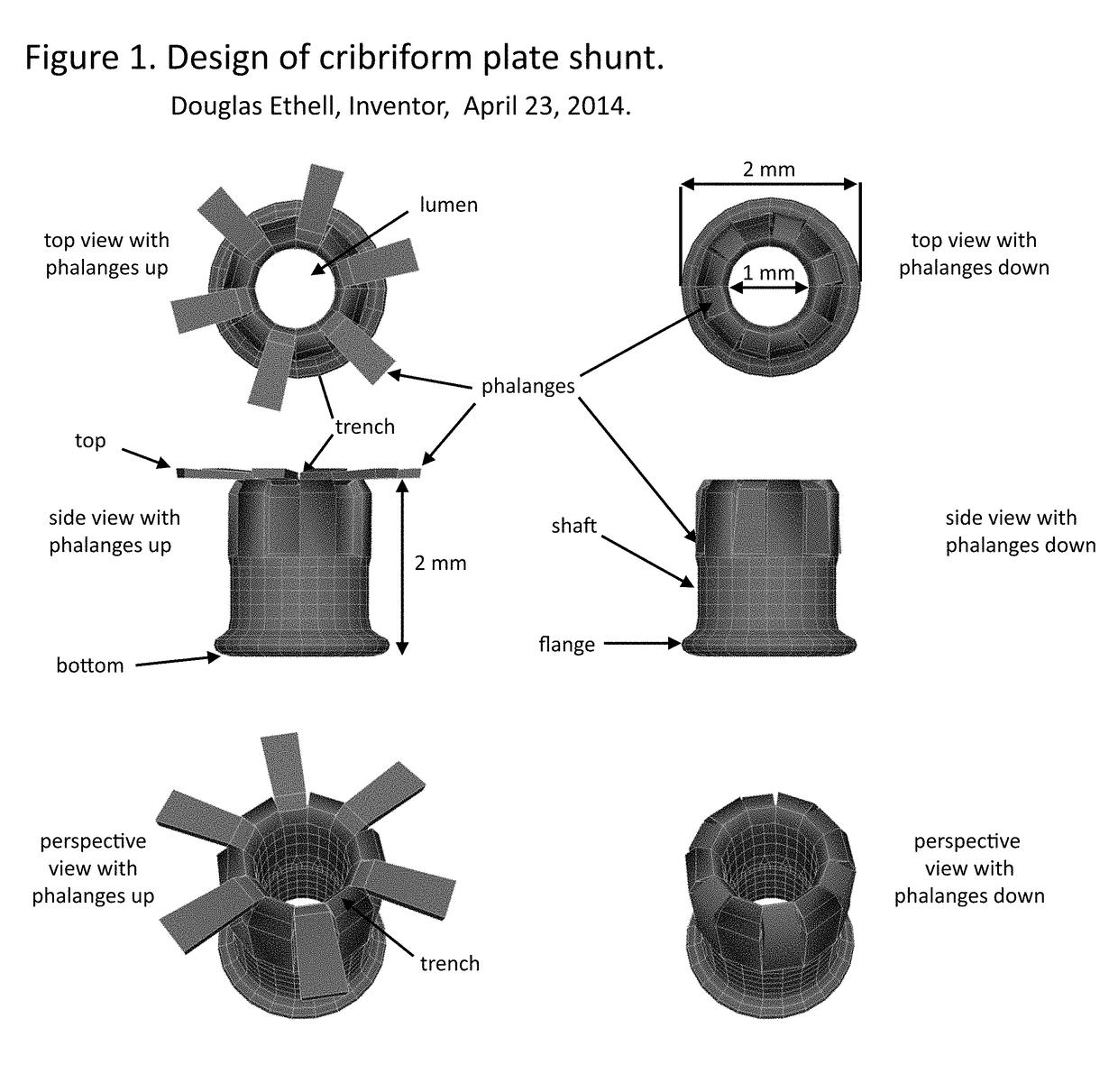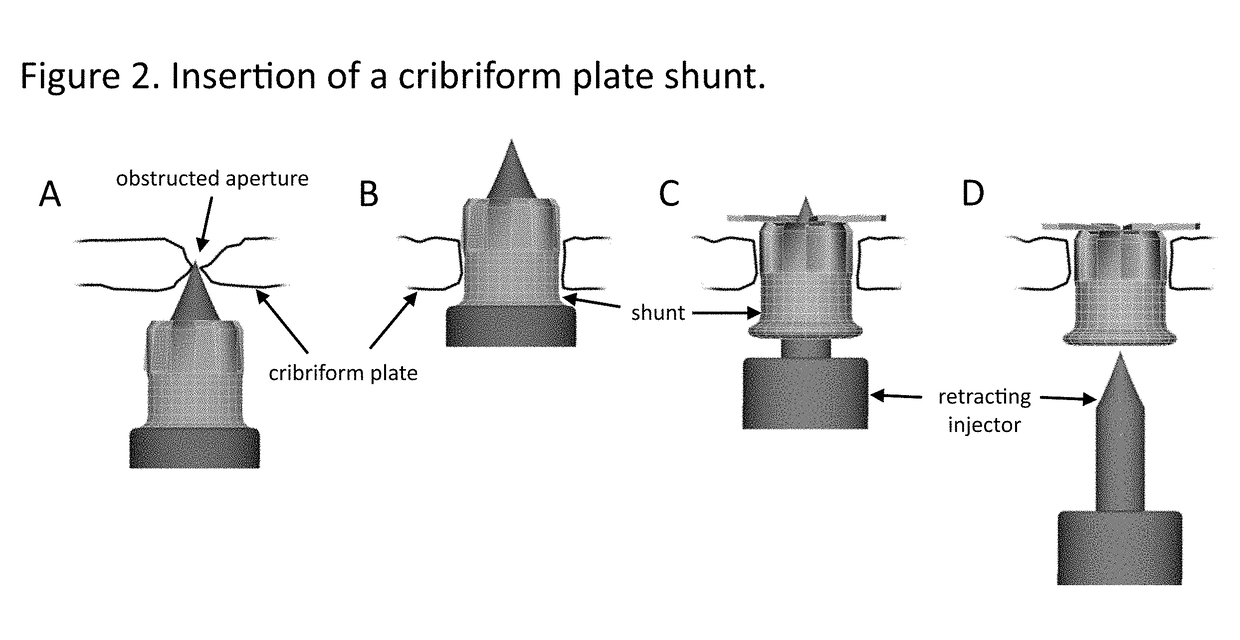Method and use of draining fluid above the cribriform plate
a technology of cribriform plate and draining fluid, which is applied in the direction of wound drains, intravenous devices, etc., can solve the problems of lacking new perspectives into the cause(s) of this disorder
- Summary
- Abstract
- Description
- Claims
- Application Information
AI Technical Summary
Benefits of technology
Problems solved by technology
Method used
Image
Examples
examples
[0019]A patient with Alzheimer's disease is treated for psychiatric and neurological aspects of the disease by implanting one or several biologically compatible shunts through the cribriform plate as depicted in FIGS. 1-3. The shunt serves as a conduit for CSF to pass from the extracellular compartment surrounding the olfactory bulb into the nasal submucosa. The shunts are inserted nasally using a purpose made device that perforates the cribriform plate and then implants the shunt. In this example the area would be sterilized before procedure. The puncture wound in the overlying nasal epithelium is then sealed with surgical glue any other suitable method.
[0020]A patient with Alzheimer's disease is treated for psychiatric and neurological aspects of the disease by implanting biologically compatible tubes to drain fluid from an interstitial compartment immediately above the cribriform plate to the peritoneal cavity. One end of a biologically compatible tube is surgically implanted and...
PUM
 Login to View More
Login to View More Abstract
Description
Claims
Application Information
 Login to View More
Login to View More - R&D
- Intellectual Property
- Life Sciences
- Materials
- Tech Scout
- Unparalleled Data Quality
- Higher Quality Content
- 60% Fewer Hallucinations
Browse by: Latest US Patents, China's latest patents, Technical Efficacy Thesaurus, Application Domain, Technology Topic, Popular Technical Reports.
© 2025 PatSnap. All rights reserved.Legal|Privacy policy|Modern Slavery Act Transparency Statement|Sitemap|About US| Contact US: help@patsnap.com



